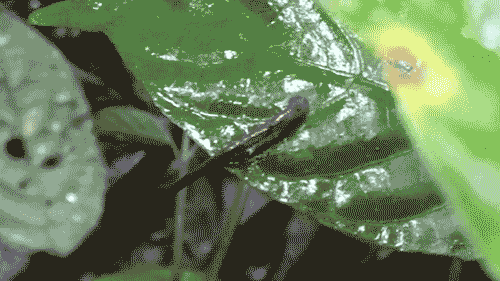Leeches can jump – yes, jump – and it has been caught on video in a world first
Leeches are more than 266 million years old, and while some eat other animals, most are sanguinivores, or blood eaters

Many debates rage on: the meaning of life, the existence of a ‘higher power’, but are you aware that for more than a century, scientists have been asking this most exigent question:
“Can leeches jump?”
New footage, captured in the forests of Madagascar, has now disturbingly proven that the parasitic worms can, in fact, propel themselves. “By coiling their body back, the blood-sucking invertebrates are able to throw themselves forward, potentially towards new prey,” according to the Natural History Museum, London.
In a study published earlier this month in the journal Biotropica, scientists shared the video, challenging previously dismissed stories of leeches jumping.
The study, A jumping terrestrial leech from Madagascar, argues:
"We provide the first conclusive evidence that at least one leech species (Chtonobdella sp. from Madagascar) can jump. For each jump, the leech coils back before taking off. Visually, this appears somewhat like a back bending cobra or a spring being pulled back to maximize potential energy."
Dr Mai Fahmy, lead author of the study, said:
The best camera deals, reviews, product advice, and unmissable photography news, direct to your inbox!
"There have been previous accounts of leeches jumping, including onto people, but those reports were often explained away as leeches just dropping from branches or attaching to passers-by as they brushed against shrubs.
"This study dispels that argument, and we believe it represents the first convincing evidence that leeches can jump and do so with visible energy expenditure."
Until recently, it was believed that leeches hunted by ambushing their prey by hanging from foliage or hanging branches, dropping onto or grabbing a passing animal. Despite this, for more than a hundred years, anecdotal evidence has asserted that the slippery suckers might be able to jump.
The videos taken by researchers in 2017 and 2023 go some way to proving this and, while they don't show a leech jumping onto prey, the footage suggests that it is entirely possible.
Emma Sherlock, who has the enviable job of looking after the Natural History Museum’s leech collections said:
"Annelids [earthworms, leeches and their relatives] are really muscular animals, so it’s not entirely surprising that they can do this. They need these muscles as instead of bone they use muscles and fluid to stay rigid, but we didn't realize they had that kind of spring in them."
Emplying photography and videography in wildlife conservation has proven an essential way to discover, document, and protect wildlife around the world.
"With video recording now an increasingly common part of daily life,” writes the Natural History Museum, “more invertebrates could be captured jumping on camera in the coming years and reveal their more athletic side."
Editor's note: This article originally featured an image of an earthworm, which has now been replaced. We apologize for any confusion caused.
Check out our guides to the best cinema cameras and best DSLRs for video. We've also got guides to the best camera for video, and the best camera for wildlife photography.

After graduating from Cardiff University with an Master's Degree in Journalism, Media and Communications Leonie developed a love of photography after taking a year out to travel around the world.
While visiting countries such as Mongolia, Kazakhstan, Bangladesh and Ukraine with her trusty Nikon, Leonie learned how to capture the beauty of these inspiring places, and her photography has accompanied her various freelance travel features.
As well as travel photography Leonie also has a passion for wildlife photography both in the UK and abroad.
